We would scrutinize production details of food for safe consumption, but we are ignorant of such facts about clothing, not to mention the “price” that mankind has to pay for producing a piece of clothing.
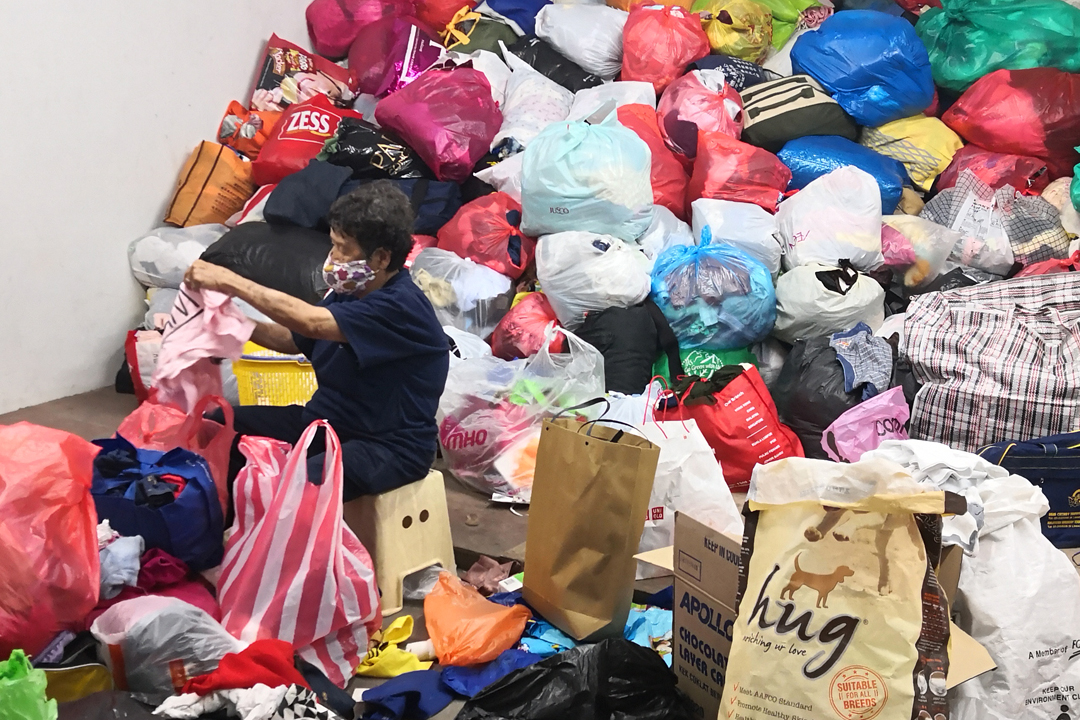
We rarely relate to our clothing when we talk about pollution. The waste created by textile industries worldwide is about 92 million tons per annum, meaning, every second about 3 tons, an equivalence of a truck-load of textile waste goes to the landfill. It is predicted that the textile waste would reach 134 million tons per annum in year 2030.
The convenience of online shopping and fast moving fashion trend have changed consumers’ buying habit and their attitude towards clothing. Brand marketing further abets consumers’ obsession and desires. According to statistics, 80 billion pieces of clothes are produced yearly, which is 11 times more than the world’s population. Consequently, cheap clothing floods the market, and eventually ends up like a “disposable item”.
◎ Textile industry is second major cause of pollution
Fast fashion started more than two decades ago. It has dramatically shortened traditional boutiques’ two seasons yearly cycle to 1-2 week seasonal cycle, making it possible to purchase new fashion clothes anytime. The average life-span of a piece of clothing was reduced by 50% between year 1992 and 2002. Since year 2000, many fast fashion brands opened up new stores, pushing the volume of clothing consumption to a new height globally. In 2002 alone, the total sales worldwide was one trillion USD. Sales doubled in 2014. On average, each individual purchased 60% more clothing yearly.
Tzu Chi recycling centres in Malacca collected about 230 tons of clothes in year 2019 alone. According to the statistics provided by SWCorp Malaysia, a government waste management body, from 2012 to 2018, the ratio of textile waste over total general waste, has risen from 2.8% to 6.3%. Currently, approximately 2,000 tons of textile waste go into the landfills daily. These figures are a clear sign of relatively low recycling rate for textile materials.
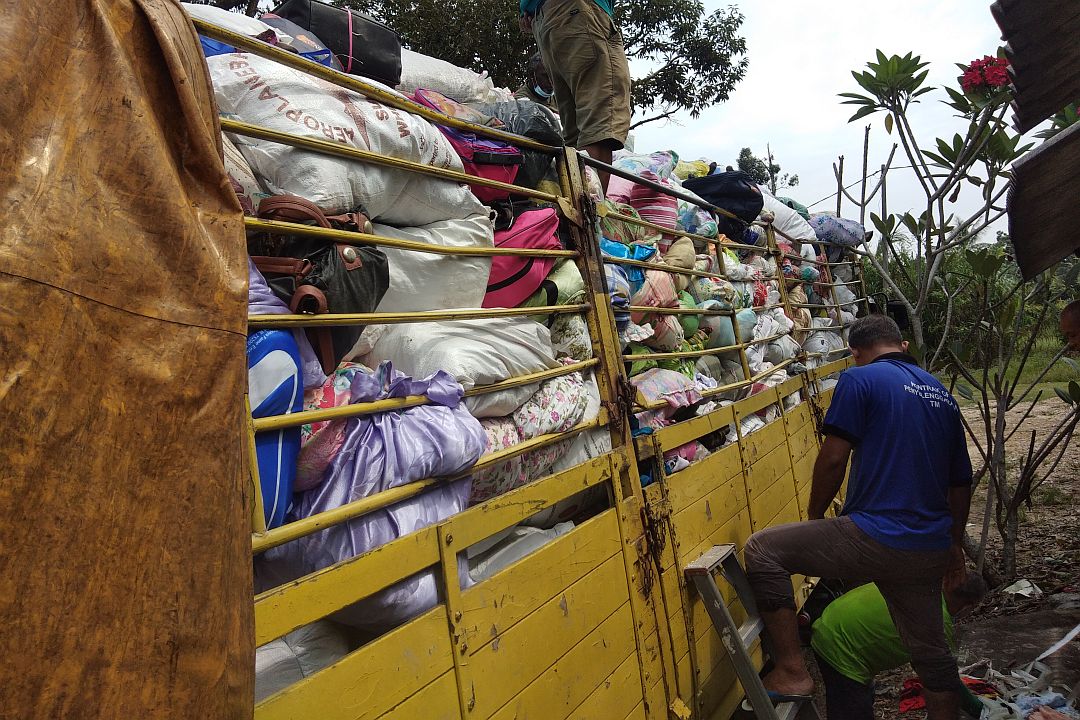
Second-hand clothes vendor, Chen Yan Yi has been in the business for more than 20 years in Malaysia. He said, 80% of used clothes donated to NGOs are usually sold to second-hand clothes vendors, who would grade the clothing by quality, weight them and sell to the third world countries. Rejects are sent to the landfills. In recent years, the second-hand clothes marketed to Kenya has reached 30 billion pieces. Kenya would sell unmarketable ones to Rwanda, Malawi and other underdeveloped countries, and the balance to the landfills.
Clothes is synthetic fibre and non-biodegradable. When this fibre is burnt, it generates obnoxious gas that can cause cancer. If buried underground, its petrochemical fibre contents such as polyester, nylon, and polypropylene fibre, would take 200 years to dissolve, and cause pollution to soil and underground water. Undoubtedly, textile industry has become the second major cause of pollution, after the petroleum industry.
With consumers’ new buying behaviour, today’s fashion quickly becomes tomorrow’s waste. Zhang Xiu Ye, a long-time volunteer handling second-hand clothing at Tzu Chi Ayer Keroh Recycling-cum-Education Centre, commented with a sigh, “More than 100 pieces of clothes are collected daily and about 10% of them are new.” To prevent unnecessary waste, she would carefully sort out the clothes every day for the recycling vendor, hoping to prolong their life-span.
◎ The hidden cost behind fast fashion
Nearly every stage of clothing production causes pollution. For example, cotton is the most commonly used natural fibre, but it requires plenty of water to grow. Assuming an individual drinks 2.5 litre of water daily, and cotton used to produce a T-shirt consumed about 2,700 litres of water, this is equivalent to three years of water supply for an individual.
Pollution begins from the raw material for cotton clothing. Cotton plantation made up about 2.4% of the worldwide farmland, but its global consumption of agro-chemicals is close to 10% and 25% for pesticides. Besides, there are various chemicals required in the process of bleaching, dyeing, washing and so on in producing a piece of clothes too. 35% of the microplastic pollutants in the ocean are emitted during the cleaning process of synthetic textiles. More than three trillion litres of fresh water are used every year for dyeing textiles, resulting in heavy metal toxic discharge into the river which will eventually flow into the sea. Such pollution will get into the soil through water circulation system, and into our food chain ultimately.
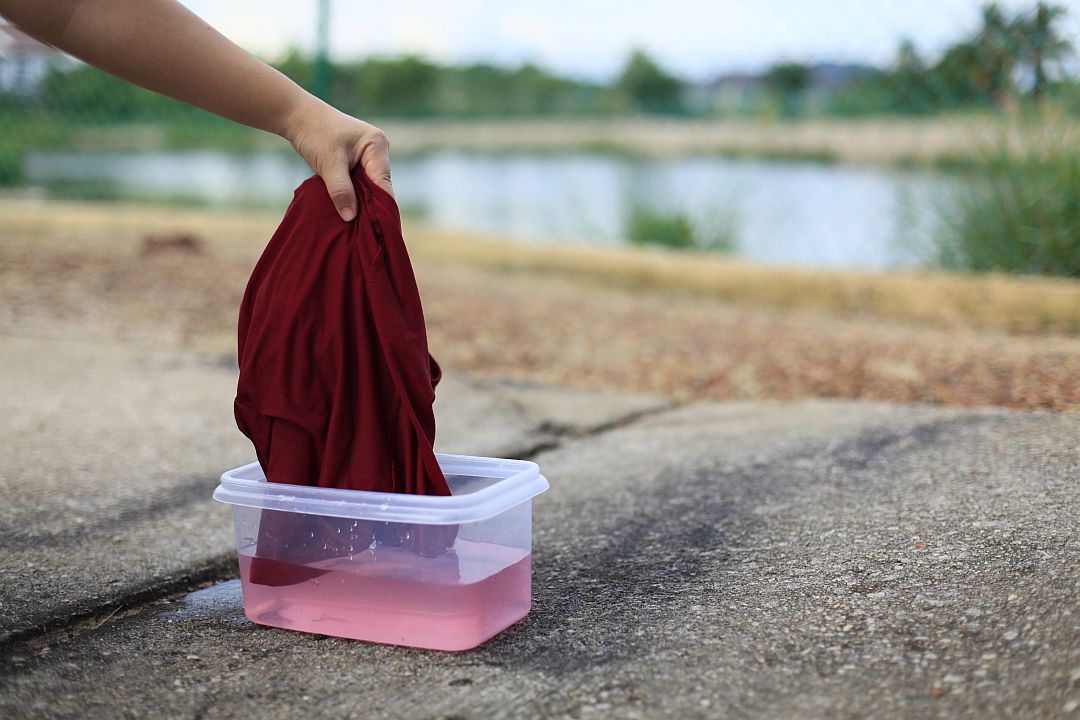
Tzu Chi volunteer Liu Jin Ying, who had been in the clothing production for 25 years, bears witness to the pollution caused by this industry. She said, “Many fabric dyeing factories of early days in Muar, were ordered by the authorities to stop operation for discharging liquid waste that caused severe pollution. Nowadays, the dyed fabrics are imported from third world countries. As the market in this industry is very competitive, the quality of fabrics is greatly compromised to reduce production cost.” Her hands were often stained with blue, red and other colours as she frequently touched the printed fabrics that had obnoxious smell. In the long run, her skin swell with rashes and developed allergic reaction that required medical treatment. Her health suffered greatly, so she decided to close her business in 2019.
The chain process of clothing production, from raw materials, fabrics manufacturing, fashion design, transportation and marketing worldwide, causes pollutions in many ways. For example, cotton is grown in India, clothing manufactured in China, while fabrics dyeing is done in Indonesia. On the average, a piece of clothing travels thousands of miles to reach the ultimate consumer, thus rendering fashion industry accountable for 10% of the global carbon footprint emissions.
If the textile and fashion industries continue growing in this manner, by 2050, they will account for 26% of the global carbon emissions in the world, causing the global climate 2℃ warmer. Every kilogramme of clothing produced uses up 0.6 kilogrammes of petroleum, 60 litres of water, and produces 1 kilogramme of waste, thus indirectly contributing to global warming problem.
◎ Sustainability and recycling start with everyone
We cannot avoid buying clothing, but we can change our buying habit, by understanding the production process of the clothing, and carefully consider our choices. In fact, there are many options. We can buy from second-hand-clothing shops, exchange with friends and relatives, make creative alteration to old clothing to prolong their life-span. Both Ayer Keroh Tzu Chi Recycling-cum-Education Centre, and Batu Berendam Tzu Chi Recycling Centre in Malacca set up a Pre-loved Goods Section to encourage the public, not only to donate used clothing, but also to buy second-hand clothing.
According to Tzu Chi volunteer Zhou Li Yun, majority of the second-hand clothing consumers are foreign workers, who buy and send them back to their hometown. In recent years, more locals, second-hand vendors and school teachers are visiting the centres to “hunt” for their respective quests.
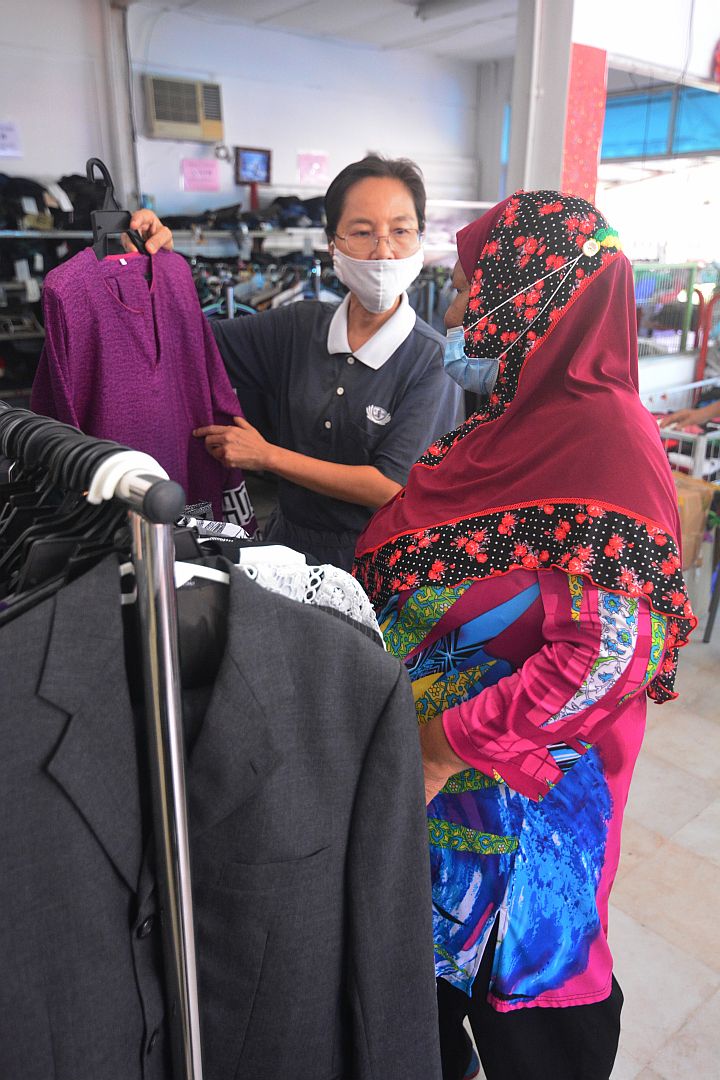
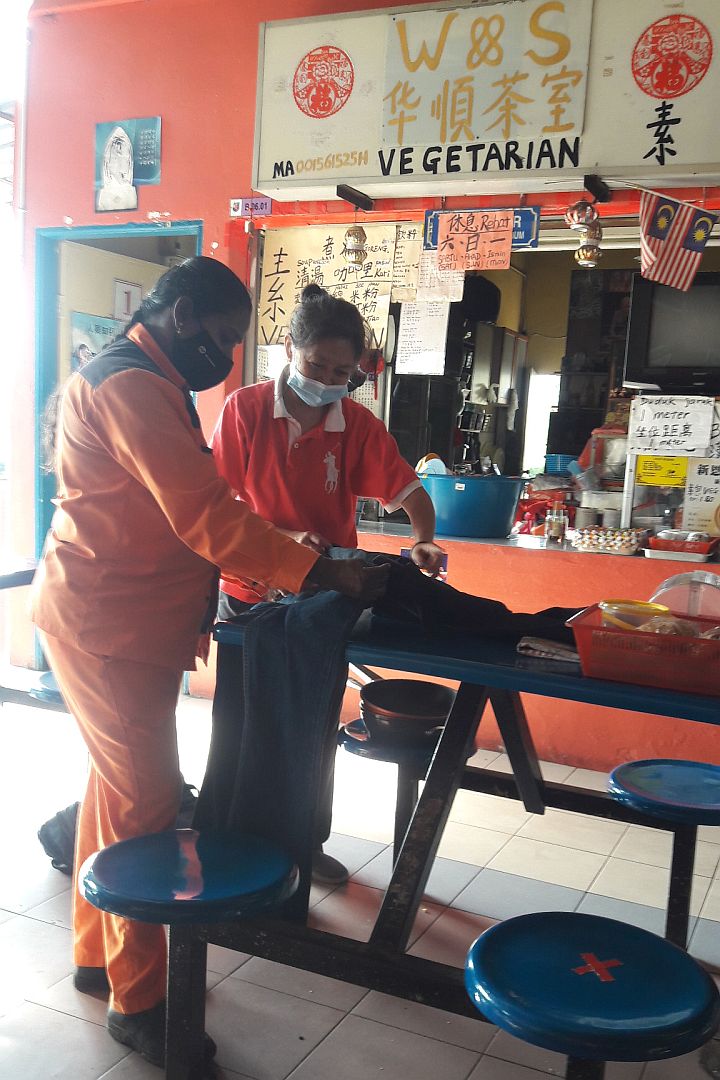
Volunteer couple, Liang Qi Shun and Huang Ting Ting, collect some second-hand clothing from Ayer Keroh Recycling-cum-Education Centre weekly, to sell at their food stall. Qi Shun said, “We hope to find new owners to prolong the life-span of the used clothing.” Some public commented that they can save money by buying used clothes. This is particularly important amongst the lower and middle income groups. They can find attire for work, casual wear and even for festive occasions.
In recent years, environmental conservation and sustainability awareness is gradually on the rise. Enterprises are adopting a more eco-friendly production model, which aims to give the Earth breathing space. Taiwan DA.AI Technology Enterprise is a practitioner of such concept. Since the birth of DA.AI brand products in 2008, all raw materials used to make them came from the PET bottles collected and sorted out diligently by more than 200,000 Tzu Chi volunteers in Taiwan daily. These PET bottles are recycled to produce eco-friendly fabrics for making dresses, pants, children’s clothing, babies’ clothing, scarfs, face masks, blankets, socks and other eco-friendly goods, thereby maximizing the benefits of circular economy by recycling the limited natural resources repeatedly.
DA.AI products consume fewer resources and less energy compared to conventional means of production. Every product carries a “Product Biography” tag to give consumers the added values of understanding the source and production process of the product. Hopefully, the consumers would consider replacing their unusable old items with eco-friendly goods that are made from recycled materials.
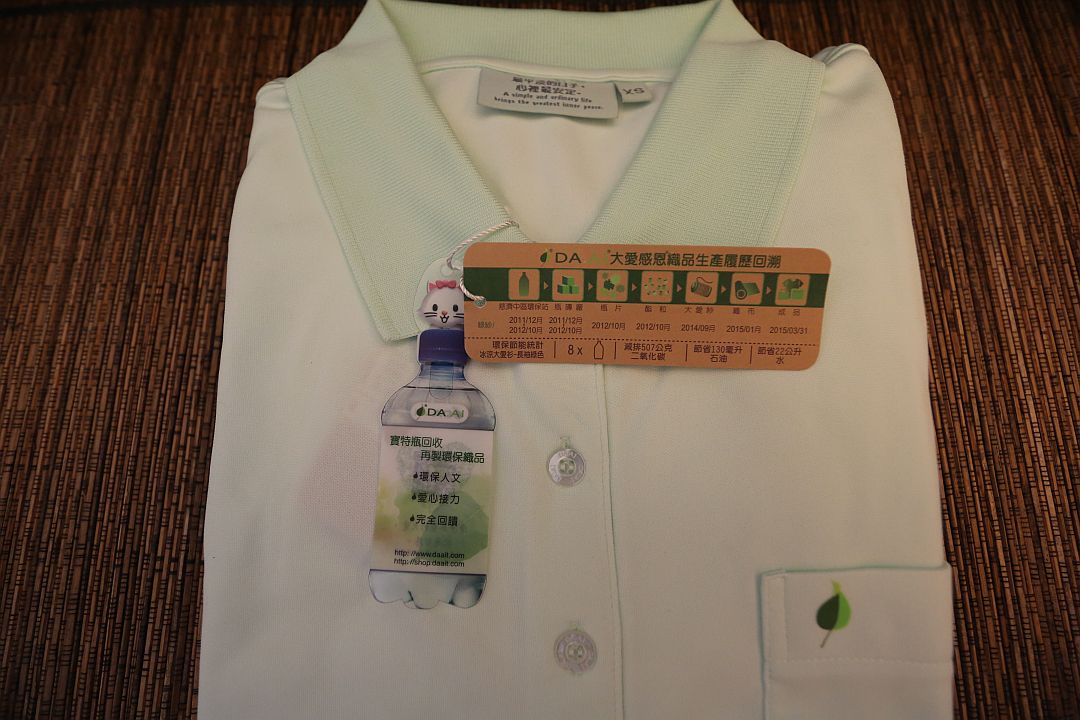
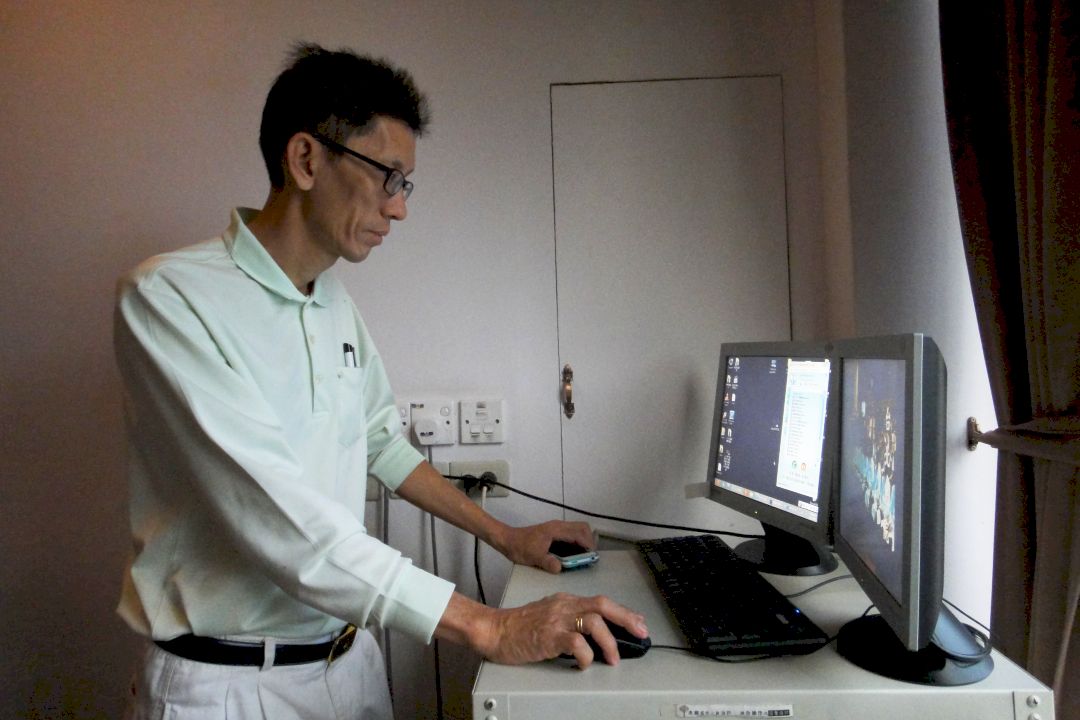
Tzu Chi volunteer Wu Yi Rong is a supporter of DA.AI Technology products, who has not bought any new clothes for over four years. He stated, “Apart from buying DA.AI Technology’s clothing, pants, bags, socks, shoes and other products, I also purchase goods from Pre-loved Goods Section at Tzu Chi recycling centre.” He stressed that DA.AI Technology clothing is cooling and comfortable to wear, and it is a good way to protect the environment too. Second-hand clothes from Tzu Chi recycling centre is as good as new. Whenever he meets friends or customers, he would seize opportunity to introduce DA.AI attire on him and promote DA.AI Technology and environmental protection concept through buying reusable goods.
●
Do you always have the urge to fill up your closet with new clothing? Let us begin by reducing carbon footprint from its source. Buy second-hand clothing to prolong their life-span; change our buying habit, select eco-friendly textile products. Such paradigm shift will bring forth positive changes to the environment, while turning fast fashion into sustainable fashion industry.


